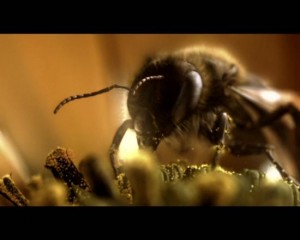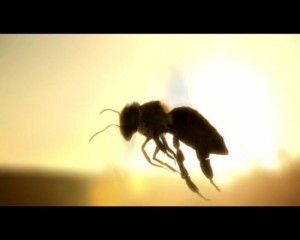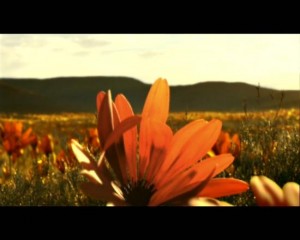For ‘Moment’, a Lexus RX spot directed by Adrian de sa Garces for DRAFTFCB Joannesburg, BUF re-created spectacular South African Namaqualand flowers and a very hard-working bee. fxguide talks to BUF visual effects supervisor Nicolas Chevallier about the design and execution of the commercial.
 fxg: What was BUF required to create for this spot?
fxg: What was BUF required to create for this spot?
Chevallier: The brief was to show a bee doing her work in a nondescript flower. Everything needed to be very realistic in macro so it required some defocus. At first, we received a reference film of shots from various ads and movies, and some board sketches. These were good timing and framing references for us, a pre-edit of the ad of sorts! The next step was to push past these references, to create the bee and improve camera movement and bee animation mostly. For the abstract shots, it took longer to define the work that needed to be done, so the shots were a ‘work in progress’ throughout production.
fxg: What concept or design work was undertaken for the look of the bee, the flowers and the environment?
Chevallier: For us at BUF, it is always important to root our research in reality, especially when we are dealing with a photorealistic end result. We received a bunch of stills for the bee – a lot of close-ups of different species with and without pollen. We concentrated on the production’s main reference, because there are many differences between each species of bee. We started to work on that basis and sent stills of our work very quickly to get feedback and thus make sure that we were on the right track. It was pretty much the same thing for the flower. For the environment, we asked for as many stills as possible of the location, from production, in the same light as the shots. We also asked for environment balls to light our scene. It was very important for us to have the same feeling of light and color than what can be found in the ad.
 fxg: What were some of the challenges in modeling and animating the bee, especially in getting up so close and achieving insect movement?
fxg: What were some of the challenges in modeling and animating the bee, especially in getting up so close and achieving insect movement?
Chevallier: First, proportions are very important in terms of modeling to recognise at a glance that what is on screen is a bee. Once we were satisfied with that aspect, we focused on textures to get as many details as possible on every part of the bee (body, legs, wings). The ‘fuzz’ of the bee was the last step. It was very important for me to get real macro lenses.
For the animation, we watched a lot of videos of bees in slow motion to understand exactly what it was we needed to replicate in CG. We put the bee inside the flower and started to animate the body to have insect moves. Then we tried to figure out how to move the camera and we found the correct frame by removing petals and moving parts of the inside of the flower that eased the animation. At the end, the animator finalized the moves and added some fine details. During all these steps, we sent Quicktimes to the editor and had discussions with the director of course.
fxg: How did you create the flowers for the spot, including the pollen particles?
Chevallier: For the flowers, and particularly for the hero flower and dry flowers we, yet again, received references and tried to match them as closely as possible. We put the chosen picture in the background of our 3D software and we modeled every part by staying true to the original. We paid attention to shading (sub-surface scattering, color, textures), hairs on the stem, and the disposition of the pollen inside the flower. Everything we create is always made with BUF proprietary software. It allows us to control each step with a full scriptable suite. For the fields of flowers, we wrote a process to randomize the place and the animation of every flower. It was like simple crowd software. This method allows us to be very responsive to production feedback.
The spot has some really nice lighting. Can you talk about your approach to lighting and rendering and also how the spot was composited together?
Chevallier: We tried to find a way to backlight every shot. Backlighting plants gives some rich textures in petals, stems, etc, and can also convey the feeling that inside a flower there is an atmosphere that catches the light. We also put some flying dust and pollen, giving us some interactive light which created depth in the shot. We composited the shots with BUF nodal 2D software using every element from the BUF render engine.

